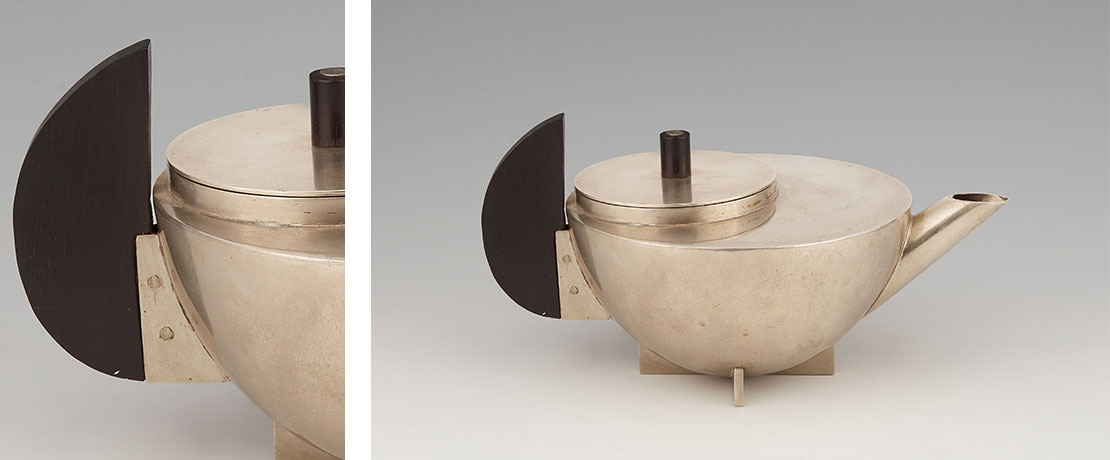A Bauhaus Icon by Marianne Brandt
Auction 1244 - Decorative Arts on May 15, 2024
Lempertz is proud to present an icon of Bauhaus design from the year 1924 in the form of the tea infuser MT 49 / ME8 by Marianne Brandt. Until now, eight examples were known in the world’s most important collections, and now a ninth has come to light. 100 years after its creation, it will be auctioned at Lempertz in Cologne.

After studying at the University of Visual Arts in Weimar followed by training as a sculptor, Marianne Brandt arrived in the metal workshop of the still young Bauhaus in 1924, soon making a name for herself with her designs of prototypes for pots, vessels and lighting, all in keeping with the slogan “Art and technology – a new unity”, issued by Walter Gropius in 1923. Her teacher Laszlo Moholy-Nagy praised her in a recommendation as “my most brilliant pupil”.
Created in 1924, her tea infuser MT49 / ME8 was one of the very early works which Marianne Brandt designed at the beginning of her training at the Bauhaus. Today it is classed as an icon of the Bauhaus movement, even though her design never went into serial production, unlike Marcel Breuer’s cantilever chairs or Wilhelm Wagenfeld’s lighting.
The hitherto eight known models are all in major international collections such as The Metropolitan Museum of Modern Art, New York, The British Museum, London, or the Klassik Stiftung Weimar. Seven of the prototypes were presented together in a display case for the first time in 2019 on the occasion of the anniversary exhibition ‘Original Bauhaus’ in the Berlinische Galerie, whilst the eighth model can be found in the new Bauhaus Museum in Dessau.
This small circle has now been joined by a ninth example, which comes to Lempertz with an interesting and seamless provenance: Marianne Brandt gifted the pot to a friend in Chemnitz in the 1970s, in whose family it has remained to this day. The correspondance exchanged between the two women has also survived and is preserved in the Berlin Bauhaus Archive.
Marianne Brandt evidently experimented in her designs with various materials. As well as two models in silver, for example, there are versions in tombac and brass. The teapot in the collection of the Germanisches Nationalmuseum in Nuremberg, which could be compared to the example now offered, is made of bronze with a nickel silver spout. An examination at the Cologne Institute of Conservation Sciences, CICS, of the version to be auctioned in Cologne in May, revealed the presence of copper, zinc and nickel in all parts, meaning it was made completely of nickel silver.
One of the previously known examples was auctioned by Lempertz in 1996 and can be found today in the Kamm Teapot Foundation in Los Angeles.
We are delighted to have the opportunity to present this new discovery on the occasion of our Decorative Arts auction on 15 May in Cologne.
Contact
If you have any questions, please do not hesitate to contact us at 0221/92 57 29–57.
Jan Bykowski
Press and public relations
info@lempertz.com
